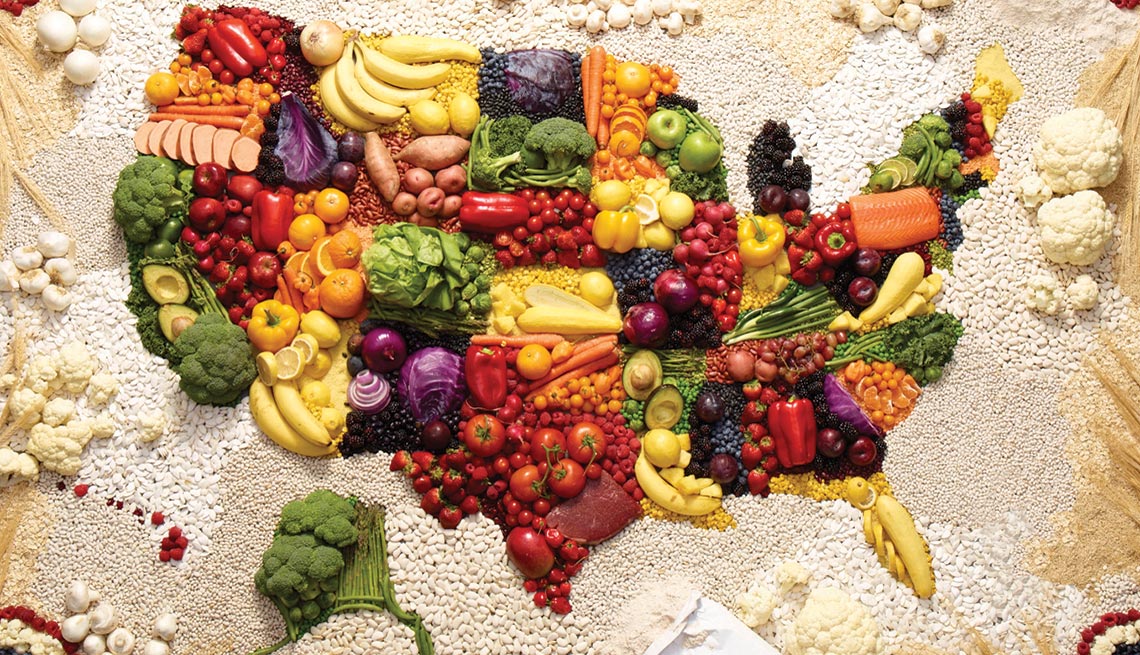America’s eating habits
The American food scene has undergone considerable change over the past two decades. Concerns about obesity, food allergies and other health effects of food are fueling a new level of scrutiny for chemicals and additives in food and contribute to shifting notions about portion size, sugar and fat content. America’s love affair with fast-food chains is on the decline, with “fast casual” food brands with natural, fresh products gaining favor. The declines cut across most major demographic groups — including higher- and lower-income families— though they vary somewhat by group.
Calories Have Fallen
After rising for decades, calories consumption has declined in recent years as public attitudes have shifted. Calories consumed daily by the typical American adult, which peaked around 2003, are in the midst of their first sustained decline since federal statistics began to track the subject, more than 40 years ago. The number of calories that the average American child takes in daily has fallen even more — by at least 9 percent. Food diaries, logs of food purchases and measures of the food supply all show that daily calories have fallen over the last decade.
Americans, on average, purchased about 40 gallons of full-calorie soda a year in 1998, according to sales data from the industry trade publication “Beverage Digest”. That fell to 30 gallons in 2014, about the level that Americans bought in 1980, before the obesity rates took off. Beverage companies have reacted by marketing diet drinks and investing heavily in new products, including iced teas and flavored water.
Still, we’re living at a time when more than 80 percent of Americans fail to eat the recommended amounts of fruits and vegetables. At the same time, many Americans overeat refined grains and sugar. This may help explain why the obesity rate seems stuck. The most recent estimate is that 36% of adults and nearly one-third of children and youth in the United States are either overweight or obese.
The rise of veganism links to allergies
Many Americans adopt their own food and eating philosophies because they have to, or want to. Some 15% of U.S. adults say they have at least mild allergies to one or more foods and another 17% have intolerances to foods. Food allergies are more common among women, blacks and people with chronic lung conditions such as asthma. People who have food allergies (about one third) are more likely to be vegan or vegetarian, suggesting that some food restrictions stem from adverse reactions to certain foods. A small minority of Americans describe themselves as either strictly or mostly eating vegan or vegetarian diets.
American consumers’ key facts
In brief, Americans’ eating habits can be summarized in the following points:
- Forty-five percent of Millennials and 24 percent of Boomers have adopted a special diet (e.g., gluten-free or vegan). One-third of all Millennials’ eating involve global cuisine; 56 percent of Millennials want something healthy for their next snack.
- Millennials are round-the-clock eaters; 12 percent of their eating occasions are for breakfast, 16 percent are for morning snacks, 15 percent lunch, 17 percent afternoon snacks, 18 percent dinner, and 20 percent evening snacks.
- Snacking now accounts for just over half of all eating occasions. One in five people eat one snack per day; 41 percent have two, 24 percent have three, 13 have four, and 4 percent have five or more.
- Consumers are most interested in savory flavors, including spicy, smoky, and tangy flavors; sour and bitter flavors are also drawing increased interest from consumers.
- Forty percent of specialty food consumers bought food online.
- About one-third of adults are devoted breakfast-eaters who never pass it up.
- In a single day, Americans typically eat and drink 14 different kinds of food and beverages from sandwiches, fruit, vegetables, carbonated soft drinks, milk, coffee, potatoes, salty snacks, juices, and ready-to-eat cereal.
It is obvious that even Americans who are considered as the “junk food lovers” are trying to adopt a healthier lifestyle. Dietologists argue that current eating patterns can be moved towards healthier eating patterns by making shifts in food choices over time and American consumers have no doubt that by making these shifts can help support a healthy body weight, meet nutrient needs, and lessen the risk for chronic disease.
as the “junk food lovers” are trying to adopt a healthier lifestyle. Dietologists argue that current eating patterns can be moved towards healthier eating patterns by making shifts in food choices over time and American consumers have no doubt that by making these shifts can help support a healthy body weight, meet nutrient needs, and lessen the risk for chronic disease.
This article was exclusively written by DK Consultants for the AMCHAM newsletter.
